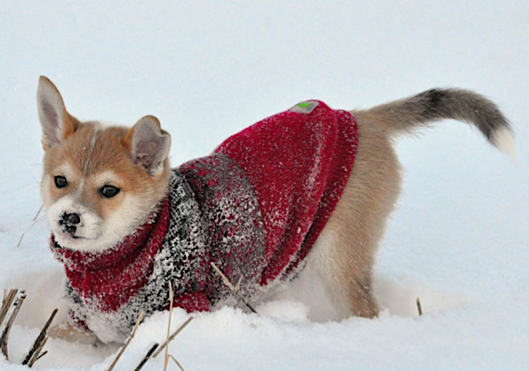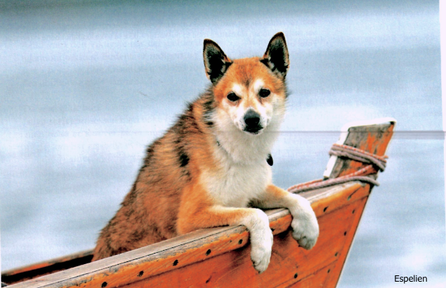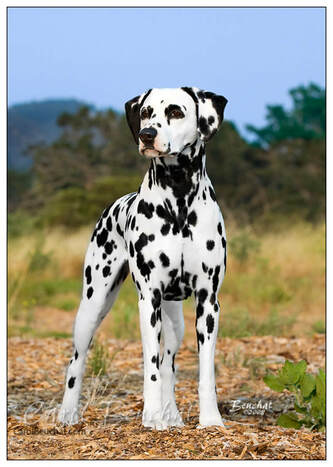II. Planning a Genetic Rescue
Genetic Rescue of an Endangered Breed: the Norwegian Lundehund
The Lundehund's importance began to decline when Puffin hunting was banned. The numbers of Lundehunds fell and a series of bottlenecks eventually reduced the breed to only six dogs, five of which were very closely related. Lovers of the breed initiated a breeding program, and the population now numbers more than 1,000 worldwide. But the very limited genetic diversity in these dogs resulted in low fertility, high mortality, and serious health issues that challenged sustainable breeding.
Finally, in 2013 the Lundehund club in Norway decided to initiate a genetic rescue program for the breed. With the guidance of scientists from the Norwegian Genetic Resource Center (NordGen), a plan was outlined to assess the genetic status of the breed, identify the best options for introducing new genetic diversity, and develop a breeding strategy to restore the breed to genetic health.
Lundehund Breed Information
- Breed history
- Current number of dogs and locations
- Pedigree information
- Health information
Threats to sustainable breeding
- Small population size
- High inbreeding
- Inbreeding depression
- Small effective population size (Ne)
- Health issues
- Not enough breeders
- Inadequate guidance for breeders
Breed-specific concerns
- Iconic Norwegian dog of high cultural importance
- Preservation of unique anatomical and behavioral traits
Key components of the Lundehund genetic rescue
- Increase the size of the population
- Reduce breeding age of bitches to 15 months
- Breed at least one litter from every healthy bitch
- Develop methods to assess breed-specific traits
- Develop methods to assess temperament and breed-typical behaviors
- Use DNA genotyping to assist mate selection
- Develop a comprehensive strategy for data collection on dogs, litters, health, etc.
- Develop an efficient breeding strategy using population genetic analyses
- Assess efficiency of breeding strategies using appropriate computer models
Planning a Genetic Rescue
The first step in the development of a sound breeding strategy is determine what you have to work with, and a review of history to understand how past events have shaped the current population of animals. For this, they did a comprehensive review of history, documenting the historical use of the breed for Puffin hunting, events that affected population size and breeding such as disease outbreaks, legislation, changes in culture, kennel fires, and replacement of dogs with other hunting methods. They developed a pedigree database that was as complete and error-free as possible. They documented fertility, litter size, mortality, and disease when information was available. They also summarized historical changes in the level of inbreeding, number of sires and bitches in the breeding program, offspring per individual, and imports and exports.
After assessing these data, they identified the problems that needed to be addressed and articulated the goals to solve them. For this, breeders worked closely with animal breeding experts and population geneticists at NordGen who assisted in developing and testing the particulars of the plan.
These were summarized as:
| Problem: small population size Goal: increase the population size Strategy: stipulate that every bitch is bred at least once unless there is a medical issue Problem: high inbreeding Goal: reduce inbreeding to 3.25 (based on 5 gen pedigree) Strategy: crossbreeding program, strategic breeding to minimize loss of diversity and reduce relatedness Problem: inbreeding depression - low fertility, small litter size, many single-puppy litters Goal: increase litter size Strategy: increase genetic diversity, and reduce inbreeding through crossbreeding Problem: small effective population size (Ne) Goal: increase Ne Strategy: increase the number of males and females used in breeding, maintain balanced ratio M:F Problem: health issues Goal: improve health, especially Lundehund syndrome Strategy: monitor causes of illness and death; determine the relationship of these with demographic and genetic factors (e.g., does lifespan correlate with inbreeding?). Problem: lack of information for breeders Goal: develop advisory resources and databases Strategy: improve understanding of goals and solutions, programs to support breeder participation Problem: not enough breeders Goal: increase the number of breeders Strategy: develop existing breeder networks, increase the demand for puppies through events and the media |
There's no point in doing a genetic rescue if the dogs produced at the end aren't the breed you started with. A critical part of any program is to have a clear picture of the critical traits of type that make the breed unique so the breeding program preserves those in the dogs that result. These traits would include physical features like size, color, coat type, proportions, shape of ears, tail, feet, and muzzle, and also instinct and behaviors, temperament, features specific to purpose, conformation including gait, shape of eye, proportions and planes of the head, and so on. A special consideration for the Lundehund is the preservation of their extreme flexibility in the shoulder and neck joints, polydactyly, ability to fold the ears, rotary front movement, and double coat that is waterproof and warm. Overall, the goal is to produce dogs with good Lundehund type that are healthy and fit for function.
The specifics of the RAS planning schedule are in their document (download below), which is broken up into sections that focus on specific aspects of the breeding plan. You can review that document, but here are some of the highlights:
- reduce the breeding age of bitches to 15 mos (to grow the population more quickly)
- commit all bitch owners to breed at least one litter unless there are medical reasons not to
- reduce the risk of IL (the Lundehund gastroinstestinal illness)
- improve fertility through crossbreeding under the guidance of the Norwegian Genetic Resource Center (NordGen)
- develop methods to assess breed mentality
- develop a description of breed-typical behaviors
- implement comprehensive data collection (health, litters, mortality, potential triggers for IL, etc.)
Download RAS Schedule (2014-2025): Breeding strategy for the Norwegian Lundehund
Download RAS data summary (2014-2018): RAS – breeding strategy for the Norwegian Lundehund
ICB's online courses
***************************************
Visit our Facebook Groups
ICB Institute of Canine Biology
...the latest canine news and research
ICB Breeding for the Future
...the science of animal breeding




